It feels as if I’ve known about the work of Antoni Gaudi all my life. Certainly I learned about, and saw pictures of his buildings, in high school art classes when I was a teenager, and have wanted to see the real thing ever since. There is nothing ordinary about his work. It is all inventive, and incredibly creative, and magical; every part of a building was a place for art. There’s nothing like it anywhere else.
As I’ve said earlier, Don and I are not ones for a ton of research or facts, but we learned a few things. He was difficult and ornery. He lived the last years of his life at La Sagrada Familia. His construction method was based on catenary arches – the inverse of holding both ends of a piece of string into a curved position. He converted to Catholicism later in life.
We visited Palau Guell first, an urban mansion designed and built for the Guell family in 1886-88. My pictures don’t even begin to do it justice. And for me, Palau Guell was the least interesting of the four buildings we visited!
The ramp down to the interior stables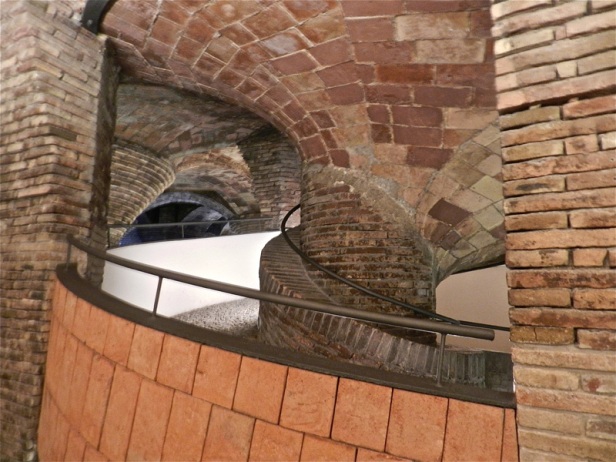
Chimneys and air vents

Interior – central well looking up
Front room overlooking the street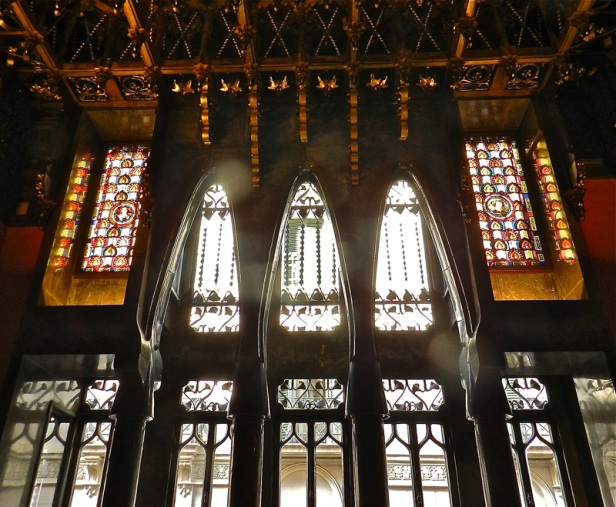
Casa Mila, known as La Pedrera, built 1905-10, is the one I most remembered from high school, and it was wonderful to finally see the real thing – so curvy and organic and different. Although it was built for the Mila family, I think it is, or became, several apartments. The apartment we were allowed to look through was huge, and very elegant.
Exterior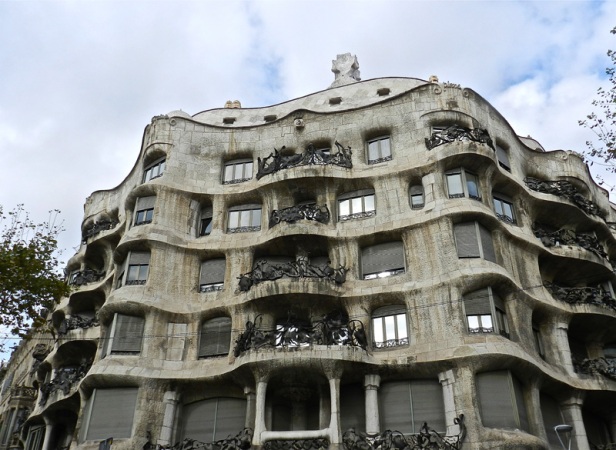
Central light and stair well
On the roof

Interior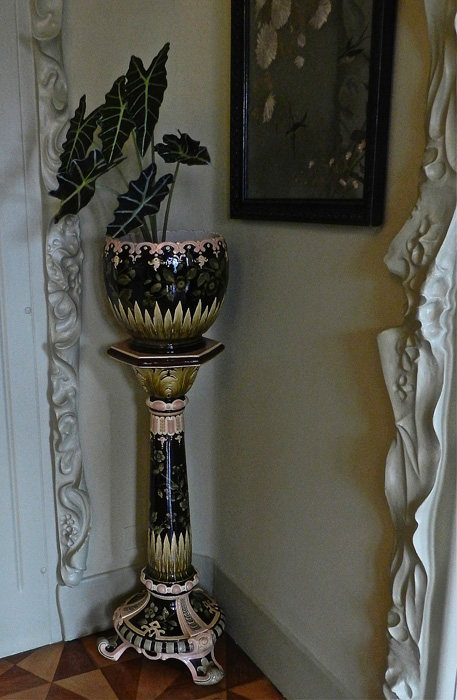
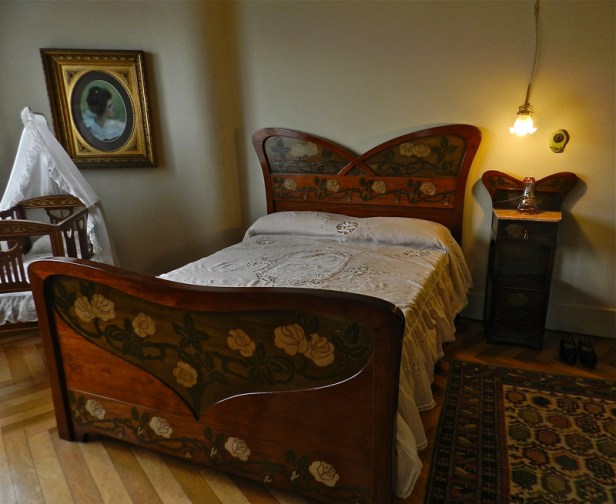


We also visited Casa Batllo, an urban mansion built for the Batllo family in 1904-06. This is the most spectacular of the three. Every room just stunning in its design and uniqueness. Again my pictures don’t even begin do it justice.
Exterior

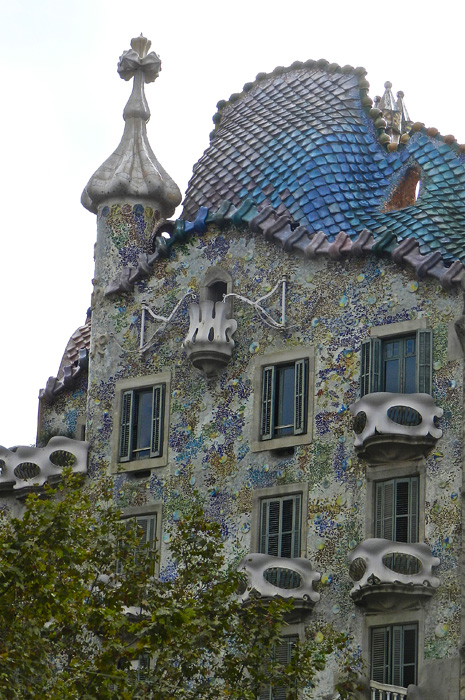
Interior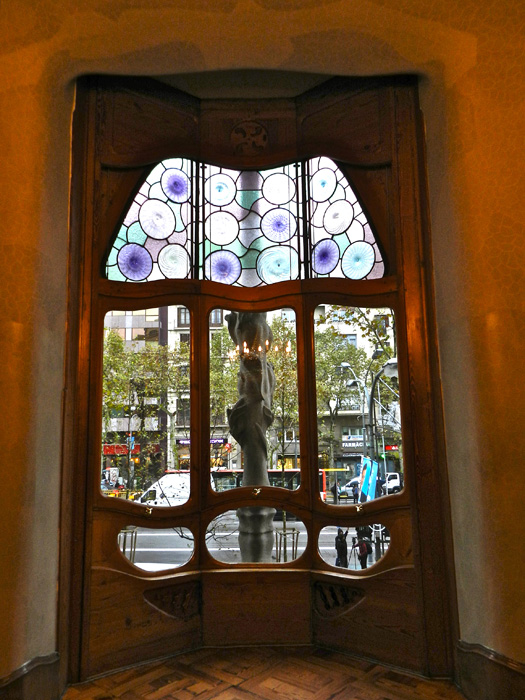

Looking down the interior light well
On the roof
On the terrace
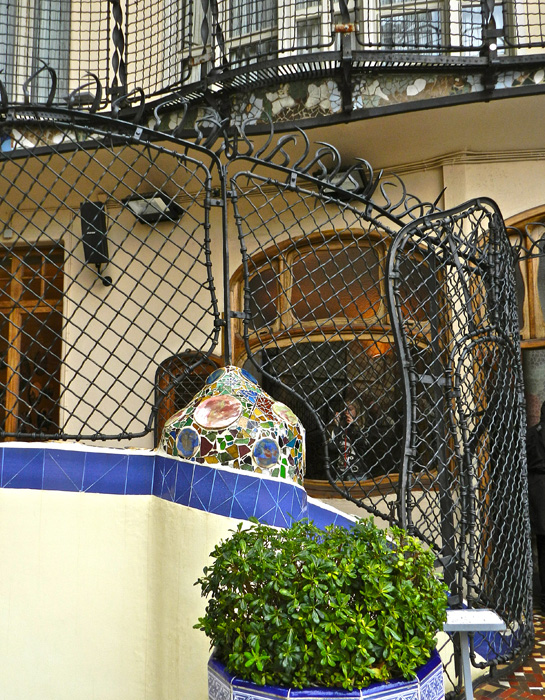
And the most astonishing of Gaudi’s buildings has to be the Basilica of La Sagrada Familia. It almost defies description. The scale is enormous – 4500 square meters interior space – the interior design heartbreakingly beautiful, and the energy one of grace and blessing, even with hundreds of people wandering around in there. We were both completely stopped by the sheer beauty of the place, by the sheer beauty of this most reverent and honest and unique expression of Gaudi’s astonishing creativity, spiritual vision, and passion.
It was begun in 1882; Gaudi took over the design in 1883 and continued with it until his death in 1926. Since then different architects have continued with the building following Gaudi’s ideas. Retired architects and builders volunteer their time. It is all funded by donation. It’s still a work in progress though the interior is complete. The exterior is hoped to be complete by 2026, the 100th anniversary of Gaudi’s death.
Honestly you’ll find better pictures on the Sagrada Familia website, but here’s a few of mine.
Passion Façade
Passion Facade sculpture detail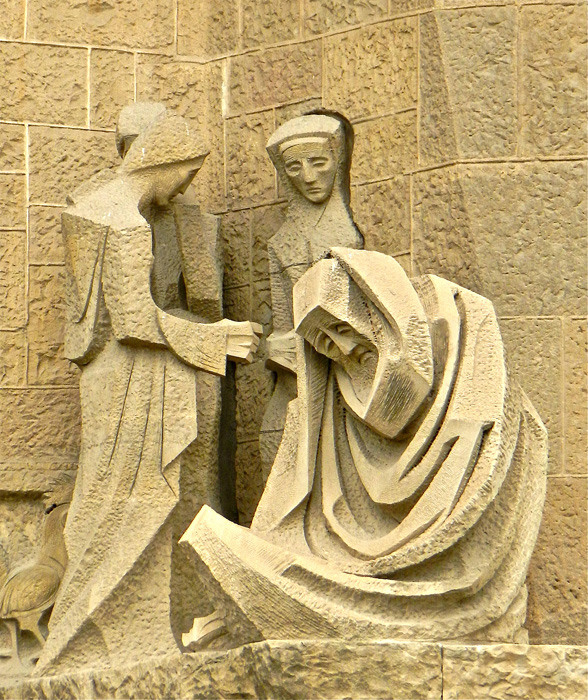
Interior



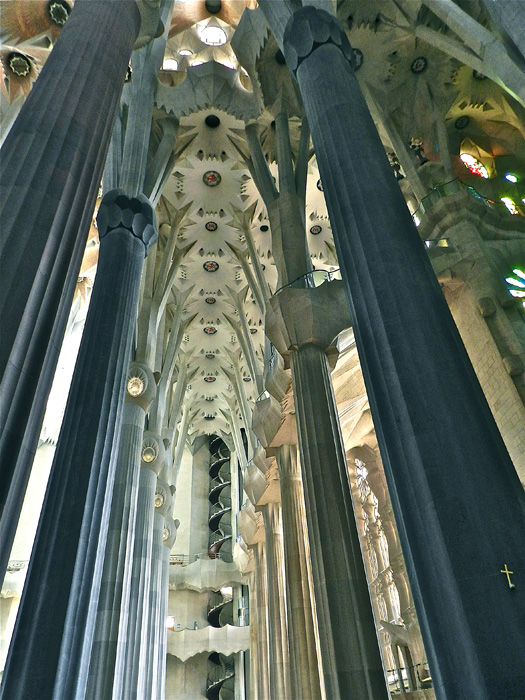
And a couple of Don’s pictures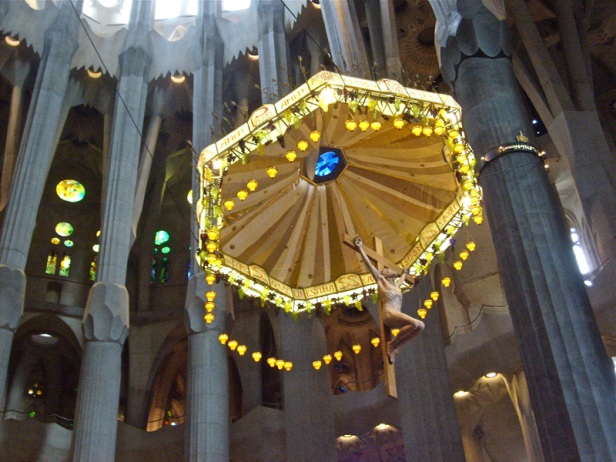

I realize that none of the pictures of the interior give any clue as to the enormous size of the space, and the feeling of spaciousness, and intimacy, both at the same time. Gaudi said something about all the columns giving the feeling of being in a forest, and there is that feeling, of the cathedral-like nature of a forest, but there is also this huge open space in the centre with the altar at one end. The place is absolutely enormous, without feeling cavernous.
On the opposite side of the basilica to the Passion Facade is the Nativity Facade. It is one of the oldest parts of the building, and has changed colour, becoming darker with the years. Although completely different in style, I think Gaudi designed both, though the sculptures on the Passion side were done by Josep Maria Subirachs well after Gaudi’s death.
Nativity Façade
Detail

We’ve been to a lot of amazing and memorable and magical places during the past several weeks. La Sagrada Familia is one of the most extraordinary and beautiful, and definitely one of the most moving and heart opening. It doesn’t matter if you’re Catholic or not, it doesn’t even matter if you’re religious or not, Gaudi’s basilica is one of the great gifts to the world.
All words and images by Alison Louise Armstrong unless otherwise noted.
© Alison Louise Armstrong and Adventures in Wonderland – a pilgrimage of the heart, 2010-2015.

Reblogged this on Wandering through Time and Place and commented:
Our short stay in Barcelona limited the amount of time we had to view to enjoy Antoni Gaudi’s work to Sagrada Familia. Two of my WordPress friends, Alice and Don, referred me to an earlier blog they did which is more extensive. I always like what Alice and Don present so I am reblogging their post on Gaudi today. Enjoy. Curt
LikeLike
Thank you so much Curt, for the reblog, and your kind words.
LikeLike